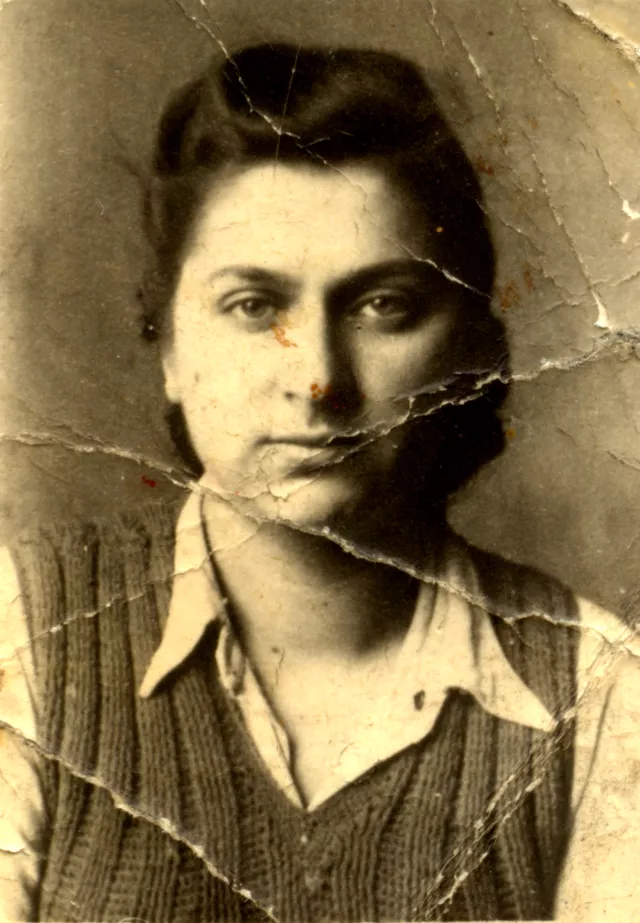This is me photographed for my documents in the ghetto in Vilnius in July 1943.
On 4-5 September the situation in the town grew tenser. Lithuanian and Polish residents were forced to leave their homes in Strashuno, Rudninku, Mesino and some other streets in the center of Vilnius. On 6 September at 6 am Lithuanian policemen knocked on our door rather politely. They gave us 30 minutes to pack and move to the Jewish ghetto. Thee were 2 ghettos established on 6 September. One was big where we were, with a central point on Rudninku Street. The smaller one was on Stikle and Jidu Streets.
Our life was more of existence, really. My father was an excellent specialist and was given a yellow certificate. The color of these certificates was often changed and this was another 'monkey trick' the fascists played. Those who failed to obtain new cards were taken to Ponary. Each worker could register his wife and two children under the age of 16 as his dependants. Since I was short and tiny my father wrote I was born in 1926 instead of 1922, and I was registered as his dependant until 1942. This gave me the right to stay at home, obtain a dependant's card, in this way he rescued me from forced labor that I would not have survived.
We hardly had any food to eat. Fortunately for me I had many friends and spending time with them made this horrible existence somewhat better. I knew there was underground movement in the ghetto. In January 1942 a partisan organization under the leadership of Yitzhak Vittenburg was established there. I asked my friends to give me a recommendation to join it. This organization helped me to get a job at a shop. At the beginning we weaved straw shoes: fascists used to wear them over their boots. Then we got knitting orders and I worked 12 hours per day. I had my own work coupon.
Fania Brantsovskaya
The Centropa Collection at USHMM
The Centropa archive has been acquired by the United States Holocaust Memorial Museum in Washington, DC.
USHMM will soon offer a Special Collections page for Centropa.
Academics please note: USHMM can provide you with original language word-for-word transcripts and high resolution photographs. All publications should be credited: "From the Centropa Collection at the United States Memorial Museum in Washington, DC". Please contact collection [at] centropa.org.
























